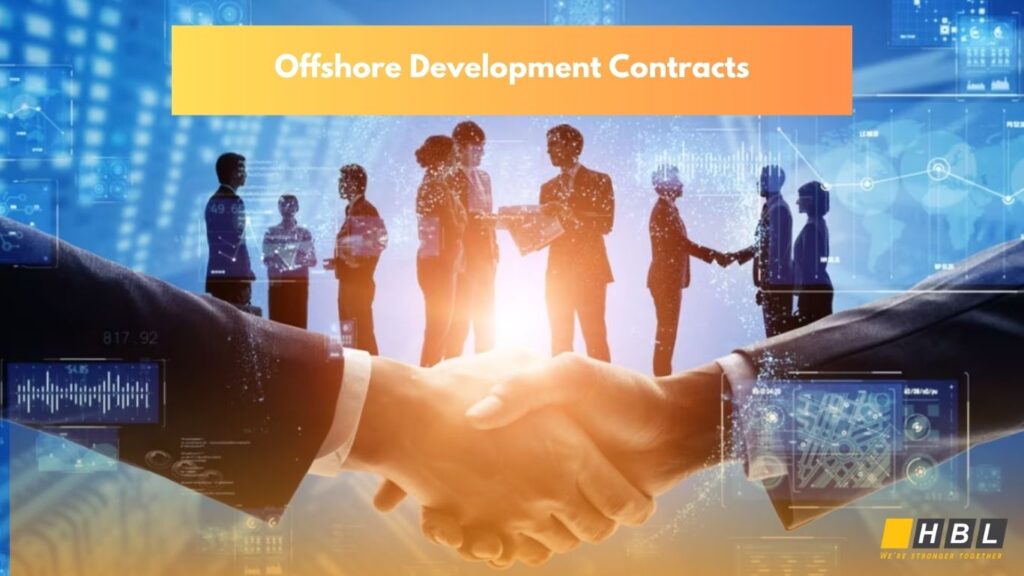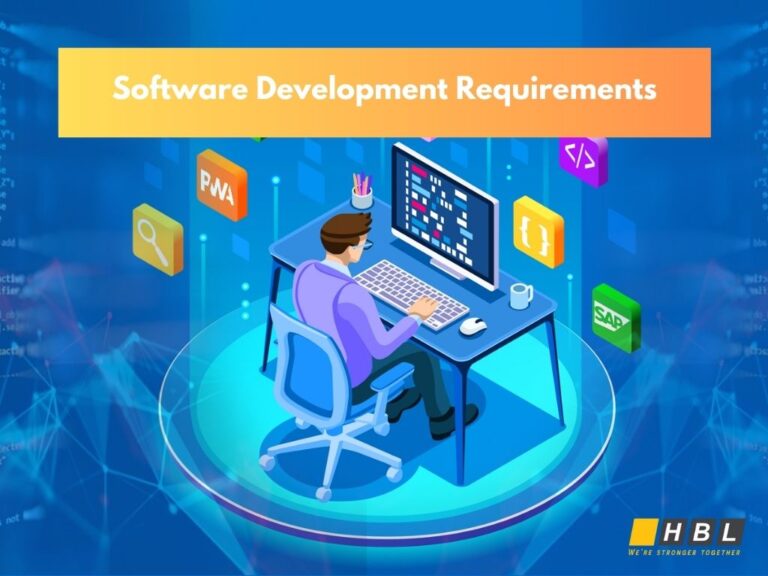Offshore development refers to the practice of outsourcing system development projects to overseas companies. This approach allows businesses to access skilled engineers at lower costs compared to domestic resources, making it increasingly popular.
However, many companies have questions such as:
“What are the different types of offshore development contracts?”
“How does the contract process work?”
This article provides a clear overview of offshore development contract types, their characteristics, and the typical contract process—especially useful for those new to the field. By the end of this article, you’ll have a solid understanding of offshore development contracts.

What Is an Offshore Development Contract?
An offshore development contract is a legally binding agreement between a company (the client) and an overseas service provider (the vendor or outsourcing partner) for the development of software, applications, or IT systems. This contract outlines the scope of work, roles and responsibilities, payment terms, delivery timelines, and other key conditions to ensure a successful collaboration.
By leveraging offshore development contracts, businesses can:
✅ Access global talent pools
✅ Reduce development costs
✅ Scale teams flexibly
✅ Accelerate time-to-market
Offshore development contracts are popular among businesses seeking cost-effective and scalable IT solutions, especially for projects like:
-
Dedicated offshore development center (ODC) setups
There are three main types of offshore development contracts:
| Contract Type | Description |
| Laboratory Contract | Also called an ODC (Offshore Development Center) contract; typically for medium- to long-term engagements. |
| Semi-Commissioned Contract | The client outsources development work but retains responsibility for the project. |
| Outsourced (Subcontracting) Contract | The client orders a project to be completed by a specific deadline. Responsibility lies with the vendor. |
Choosing the right contract type depends on your project’s goals, duration, and flexibility needs.
| Contract Type | Advantages | Disadvantages |
| Laboratory Contract | – Access to skilled engineers at lower cost
– Stable, long-term engagement – Ability to build an overseas development team |
– Not cost-effective for short-term projects
– Requires setup for smooth collaboration |
| Semi-Commissioned Contract | – Secure required labor
– Flexible to specification changes |
– Not ideal for projects with tight deadlines
– Client assumes responsibility for the work – Ambiguities in contract scope |
| Outsourced (Subcontracting) Contract | – Suitable for deadline-driven projects
– Vendor is responsible for delivery |
– Harder to obtain client-side approvals
– Less control over development process |
Comparison of Offshore Development Contract Types
Client-Side Advantages and Disadvantages
| Contract Type | Client Advantages | Client Disadvantages |
| Lab Contract | – Secure skilled engineers
– Lower costs for long-term projects – Build overseas capabilities |
– Higher costs for short-term projects
– Setup time and effort required |
| Semi-Commissioned Contract | – Flexibility in development
– Secure necessary labor |
– Client responsible for project success
– Potential contract ambiguities |
| Outsourced Contracting | – Fixed deliverables by deadline
– Vendor assumes responsibility |
– Harder to obtain approvals
– Less client-side control |
Vendor-Side Advantages and Disadvantages (For Reference)
| Contract Type | Vendor Advantages | Vendor Disadvantages |
| Lab Contract | – Stable income
– No system completion obligation – Flexible development |
– Risk of staffing shortages
– Complex contract terms |
| Semi-Commissioned Contract | – Can align with client plans
– Client responsible for outcomes |
– Hard to develop management skills
– Risk of contract termination by client |
| Outsourced Contracting | – Wide project opportunities
– Skill enhancement through projects |
– Responsible for deliverables and deadlines |
The Offshore Development Contract Process
The typical contract process follows these steps:
1. Consultation on Requirements and Specifications
Discuss your project goals, system requirements (even at a draft stage), and clarify expectations with the offshore vendor. Consider signing a Non-Disclosure Agreement (NDA) if sensitive information is involved.
2. Determine Contract and Development Methods
Choose the most suitable contract type (Lab, Semi-Commissioned, or Outsourced) based on your project needs. Decide between development methodologies:
-
- Waterfall: All requirements defined upfront.
- Agile: Iterative development in small units, adapting as the project progresses.
- Waterfall: All requirements defined upfront.

3. Obtain and Adjust Estimates
Request estimates from multiple vendors. Review thoroughly—especially on unclear items or assumptions—and adjust before signing. Compare quotations to gauge market rates and ensure fairness.
4. Contract Signing and Ordering
After selecting a vendor, sign the contract and issue a Purchase Order (PO) to commence the project.
Key Points to Remember When Signing an Offshore Development Contract
| Key Considerations | Why It Matters |
| Draft a Comprehensive Contract | Covers all necessary clauses and serves as legal protection. |
| Clarify Support Scope in Your Language | Ensures mutual understanding of responsibilities and expectations. |
| Define Potential Risk Areas Clearly | Reduces misunderstandings and helps avoid disputes later. |
Recommended Contract Clauses
Include the following in your contract:
- Delivery deadlines
- Fees and payment terms (currency, rates)
- Scope of work
- Deliverables and acceptance criteria
- Number of engineers and technical requirements
- Security and data protection clauses
- Reporting frequency (e.g., daily reports)
- Applicable governing law (e.g., Japanese law for Japanese companies)
For international contracts, clarify the governing law and consult legal experts if necessary.
Common Challenges in Offshore Development
While offshore development offers cost and resource benefits, potential issues include:
- Communication gaps
- Quality concerns or misaligned deliverables
- Unexpected cost overruns
- Sudden team member changes
Proactively addressing these risks during the contract stage is essential.

Summary Table
| Contract Type | Key Features |
| Laboratory Contract | ODC contract for medium- to long-term resource allocation. |
| Semi-Commissioned Contract | Client retains project responsibility, vendor executes work. |
| Outsourced (Subcontracting) Contract | Vendor completes defined project by deadline; full responsibility lies with vendor. |
Contract Process Recap
- Consultation on requirements and specifications
- Determination of contract and development methods
- Obtaining and reviewing estimates
- Contract signing and order placement
Read more:
Find Your Ideal Software Development Partner: A Guide to Unlocking Innovation and Growth
Unlocking the Benefits of Mobile Application for Business Success




